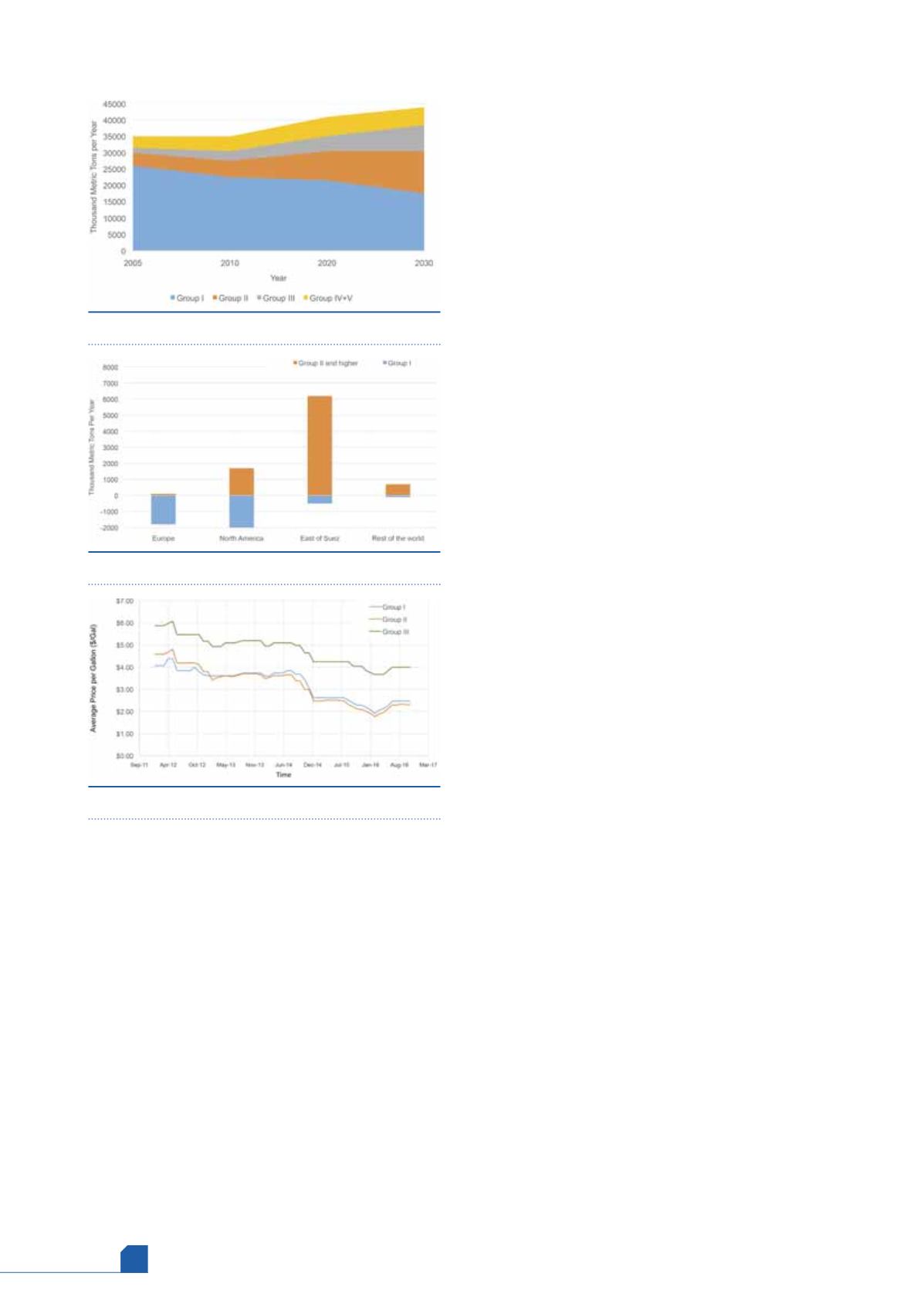
March
2017
HYDROCARBON
ENGINEERING
134
been banned in many countries because of the toxic, acid
sludge byproduct.
Vacuum distillation is used to extract base oil from
used oil, producing Group I base oil only. The product is
not suitable for automotive use, but can be used as bar and
chain oil or burned as marine diesel fuel. In order to make
oil that is suitable for automotive, or other uses requiring
higher quality oil, an additional step is needed, such as clay
treatment, solvent extraction, or hydrotreating.
Clay treatment can remove contaminants such as sulfur
and odour from the product to produce a higher quality
Group I base oil, suitable for some automotive use.
Solvent extraction removes contaminants and
unsaturated hydrocarbons, producing a high quality Group I
base oil often suitable for automotive use. This process is
unable to reduce sulfur levels to reach Group II product. In
addition, during the process of removing unsaturated
hydrocarbons, the product yield is reduced.
Finally, hydrotreating is a process that utilises
hydrotreating catalyst and hydrogen to remove contaminants
and convert unsaturated hydrocarbons into saturated
hydrocarbons. This ensures the highest yield and quality of
Group II base oil. In addition, by using a blend of proprietary
catalysts, Chemical Engineering Partners’ (CEP) hydrotreating
process is able to produce Group III base oil products.
By renewing the base oil, hydrotreating effectively
reduces the need for base oil to be refined from crude oil.
Figure 1 shows a direct comparison between used oil
re-refining and crude oil refining (primary equivalent
processes).
Re-refining is a key factor in helping to prevent the
degradation of the environment. Ideally, a ‘closed loop’
cycle is desired, which, as shown in Figure 2, maximises the
lifetime of the renewable resource. In this closed loop, the
used oil that comes from car engines is collected and
re-refined in order to become the same engine lubrication
oil again.
Product trends
The automotive industry accounts for the major
application share in the global base oil market. Advances in
engine technology that improve efficiency put a bigger
strain on the lubricating oil and require higher quality oil to
be used. This sector has gradually transitioned towards
higher quality base oils (Group II, III or higher). Group I base
oil is expected to experience a downward trend in terms of
consumption, especially in highly developed areas such as
Europe and North America. This is primarily due to the
substitution of Group I oil by higher quality Group II or III
oil. Figure 3 shows the global projected base oil demand
trend.
Although Group I still has a substantial place in the
market due to developing countries’ demand, it is
nonetheless declining steadily. Group II and III markets are
growing as vehicles become cleaner and more energy
efficient. Worldwide Group I plant closures further confirm
this trend; for example, Shell’s Pernis refinery, the Kuwait
Petroleum refinery, Colas France refinery and ExxonMobil’s
Beaumont refinery are just some of the facilities to have
shut down in recent years. Figure 4 shows the adaption in
base oil production. The increase in Group II and III
production is observed by announcements of new Group II
and III plants being built worldwide.
Market outlook
The re-refining business is greatly affected by the cost of
used and base oil. The difference between base and used
oil prices dictate the profit margin for re-refiners.
Although the used oil re-refining economics are difficult
due to recent low base oil prices, there are some silver
linings. In North America, legislation has made it illegal to
improperly dump used oil. Additionally, the price of used
oil is decreasing, and even shifting, so that used oil
collectors do not have to pay to pick it up. In some cases,
re-refiners even get paid to pick up used oil from
generators (reported up to US$0.15/gal.), significantly
improving their margins.
The world over, used oil disposal is becoming more
regulated. In Vietnam, there are efforts to establish
legislation that prohibits improper disposal or burning of
Figure 3.
Base oil demand projection.
4
Figure 4.
Change in base oil production 2010 – 2020.
4
Figure 5.
Average Group I, II and III base oil prices.
5








